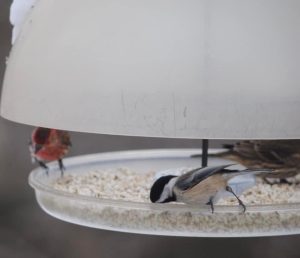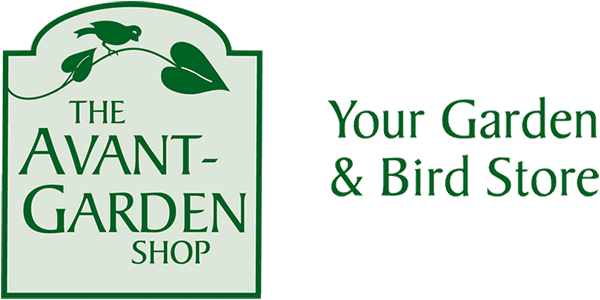 In addition to the pleasure that comes from watching birds at a feeder, many people choose to feed birds to help them out.
In addition to the pleasure that comes from watching birds at a feeder, many people choose to feed birds to help them out.
You may have heard the idea that birds become dependent on feeders, and we could end up harming them if we stop stocking our feeders.
The scientific literature suggests this may not be the case.
In a study comparing winter survival in Black-capped Chickadees who were regular feeder users with chickadees who weren’t during a winter that neither group could access feeders found no difference in winter mortality, meaning the feeder users were not dependent upon feeders for survival.1 A review paper reported that birds who use feeders tend to rely more heavily on natural food sources than on feeders, moving around and visiting feeders sporadically.2 This pattern helps explain why you might see a lot of birds at your feeders for a few days and then very few at all for a few days. Another study found that birds who used feeders were healthier, but cautioned that feeders can also facilitate the spread of disease.3 This emphasizes the importance of “responsible feeding,” that is, cleaning your feeder and replacing food regularly to help reduce disease transmission. Check out this Garden Gate episode for feeder cleaning tips.
Winter birds this year
It looks like it might be another good winter for seeing finches and grosbeaks. Many of the finches that seemed to have gone missing this year are now back: American Goldfinches, House Finches, Common Redpolls (keep your eyes open for Hoary Redpolls, too!), and Pine Siskins are starting to show up. Some suggest there may also be a lot of Evening Grosbeaks in this area again this winter.
Why do they come south some years and not others? This is likely linked to food, and could be because (1) there’s a scarcity of seed farther north right now so they’ve moved south to find food, and/or (2) there was an abundance of food last spring/summer and more birds survived into the winter, and some have to move south to find food.
Winter bird watching
The first place to start is at home! Finches love nyger seed, so setting up a tube feeder with high-quality nyger seed will offer a perfect opportunity to see finches.
If you want to explore further afield, consider visiting places that have a variety of habitats and include some coniferous forest. Some of my local favourites include the Trent Wildlife Sanctuary, Jackson Park, and Warsaw Caves. Last month’s blog post offered some tips for winter birdwatching, including using eBird’s interactive hotspot map.
– – – – –
1 Brittingham, M.C., & Temple, S.A. 1992. Does winter bird feeding promote dependency? Journal of Field Ornithology, 63(2): 190-194.
2 Reynolds, S.J., Galbraith, J.A., Smith, J.A., & Jones, D.N. 2017. Garden Bird Feeding: Insights and Prospects from a North-South Comparison of This Global Urban Phenomenon. Frontiers in Ecology and Evolution, 5: 1-24. https://www.frontiersin.org/article/10.3389/fevo.2017.00024
3 Wilcoxen, T.E., Horn, D.J., Hogan, B.M., Hubble, C.N., Huber, S.J., Flamm, J., Knott, M., Lundstrom, L., Salik, F., Wassenhove, S.J., & Wrobel, E.R. 2015. Effects of bird-feeding activities on the health of wild birds. Conservation Physiology, 3(1): https://doi.org/10.1093/conphys/cov058
